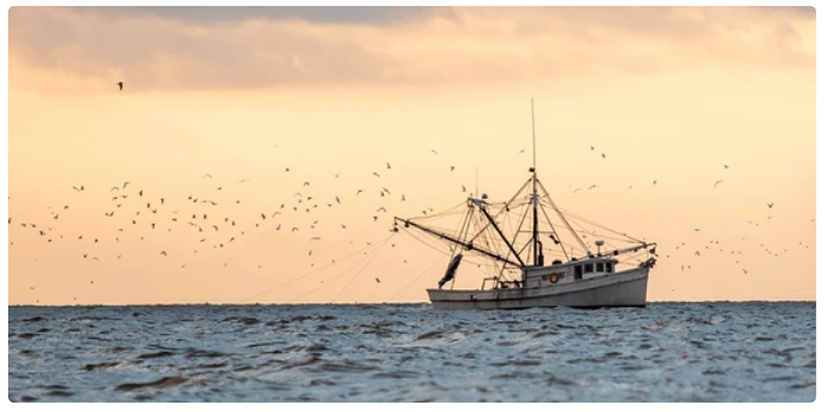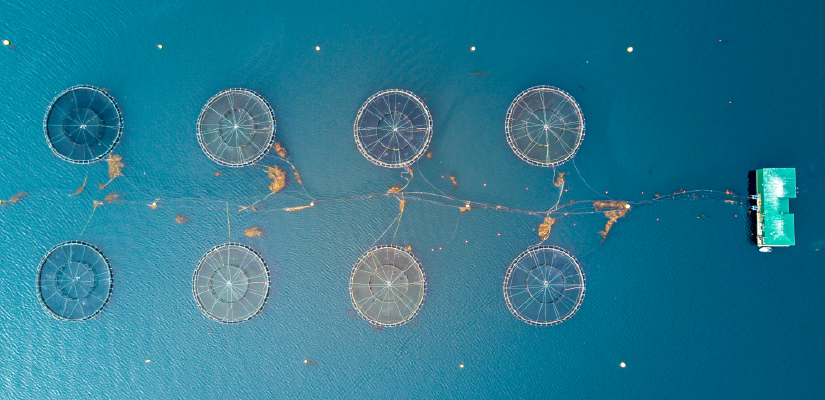
Akvakultura EU-a
Zajednička ribarstvena politika Europske unije (ZRP) definira akvakulturu kao „uzgoj ili uzgoj vodenih organizama primjenom tehnika osmišljenih za povećanje proizvodnje predmetnih organizama iznad prirodnog kapaciteta okoliša, pri čemu organizmi ostaju u vlasništvu fizičke ili pravne osobe tijekom faze uzgoja i kulture, do i uključujući izlov”.
Akvakultura je jedan od najbrže rastućih sektora proizvodnje hrane na svijetu i sve važniji doprinosi globalnoj opskrbi hranom i gospodarskom rastu.
U Europi akvakultura ima ključnu ulogu u društveno-gospodarskom razvoju obalnih i riječnih područja te u očuvanju morske riječne kulture i kulture ribarstva. Sektor akvakulture u EU-u 2020. dosegnuo je 1,2 milijuna tona u obujmu prodaje i 3,9 milijardi EUR u vrijednosti prometa te je izravno zapošljavao oko 57 tisuća osoba koje rade za oko 14 tisuća poduzeća. To su prvenstveno mikropoduzeća i mala poduzeća koja su obično u obiteljskom vlasništvu (STECF 24 – 14).
Pravna osnova politike akvakulture EU-a nalazi se u ZRP-u iz 2013., čiji je cilj poduprijeti rast sektora akvakulture EU-a uz istodobno osiguravanje njegove gospodarske, okolišne i socijalne održivosti kako bi se građanima EU-a osigurao izvor zdrave hrane i doprinijelo sigurnosti opskrbe hranom. Konkretno, člankom 34. „Promicanje održive akvakulture” uspostavlja se metoda otvorene koordinacije među državama članicama na temelju Komisijinih strateških smjernica za održiviju i konkurentniju akvakulturu u EU-u ( prvi put donesene 2013. i revidirane 2021.).
Te su smjernice središnji stup strateške koordinacije politike akvakulture u Uniji i njima se nastoji izgraditi konkurentan i otporan sektor akvakulture EU-a; sudjeluje u zelenoj tranziciji; osigurava društvenu prihvaćenost i informiranje potrošača; povećava znanje i inovacije. Na temelju toga od država članica zatraženo je da preispitaju svoje višegodišnje nacionalne strateške planove za akvakulturu u kojima moraju iznijeti svoje planove, ciljeve i odgovarajuće mjere za promicanje i razvoj održive akvakulture na svojem državnom području. Objavljeni MNSP-i, uključujući sažetak na engleskom jeziku, mogu se pronaći u odjeljku Informacije o zemljama na internetskim stranicama AAM-a.
Provedba strateških smjernica i višegodišnjih nacionalnih strateških planova podupire se sredstvima dostupnima u okviru Europskog fonda za pomorstvo i ribarstvo (EFPRA) koji traje od 2021. do 2027. Drugim programima financiranja EU-a, kao što su Obzor Europa ili BlueInvest II, financiraju se i istraživanja i projekti povezani s akvakulturom.
Saznajte više o sektoru akvakulture EU-a na sljedećim poveznicama:
- Glavna uprava Komisije za pomorstvo i ribarstvo (GU MARE)
- Znanstveni, tehnički i gospodarski odbor za ribarstvo (STECF) – Sektor akvakulture EU-a – gospodarsko izvješće za 2024. (STECF 24 – 14)

Mehanizam EU-a za pomoć u akvakulturi
Cilj je Mehanizma EU-a za pomoć u akvakulturi (AAM) pružiti potporu državama članicama, industriji akvakulture i drugim relevantnim dionicima u provedbi strateških smjernica za održiviju i konkurentniju akvakulturu EU-a za razdoblje 2021. 2030. pružanjem logističke, administrativne i tehničke pomoći te jedinstvene kontaktne točke za znanje i prakse u području održive akvakulture u EU-u.
Mehanizam pomoći dio je ugovora o uslugama kojim zajednički upravljaju Europska izvršna agencija za klimu, infrastrukturu i okoliš (CINEA) i GU MARE. Konzorcij koordiniraju NTT DATA,Poseidon, SCOPE – Netcompany,Europsko društvoza akvakulturu (EAS) iEuropska platforma zatehnologiju i inovacije u akvakulturi (EATIP). Ugovor o uslugama započeo je u srpnju 2024. i trajat će do lipnja 2026.
Ciljevi
AAM Europskoj komisiji i državama članicama EU-a pruža logističku, tehničku i administrativnu potporu za provedbu novih strateških smjernica.
Konkretno, za postizanje konačnog cilja misije EU-a za azil ključno je nekoliko ciljeva:
- Prikupljanje i razmjena znanja, dobre prakse, promicanje relevantnih događanja, širenje vijesti i drugih informacija o održivoj akvakulturi u EU-u.
- Pružanje tehničkog stručnog znanja o održivoj akvakulturi pružanjem potpore Europskoj komisiji u izradi smjernica i popratnih dokumenata o različitim aspektima politike akvakulture
- Razvoj alata za osposobljavanje i e-učenje o tim smjernicama i popratnim dokumentima
- Odgovor na pitanja država članica i dionika o izrađenim smjernicama
- Organizirati događanja, radionice, konferencije, osposobljavanje i tehničke sastanke namijenjene državama članicama EU-a, industriji akvakulture i drugim dionicima kako bi se podržala provedba strateških smjernica EU-a o akvakulturi.
Poveznice
Osnivaju se referentni centri EU-a za dobrobit životinja (predviđeni Uredbom o službenim kontrolama, donesenom u ožujku 2017., kojom se usklađuju pravila EU-a o službenim kontrolama duž cijelog poljoprivredno-prehrambenog lanca) kako bi se državama članicama EU-a pomoglo u službenim kontrolama pravila o dobrobiti životinja na poljoprivrednim gospodarstvima, tijekom prijevoza i u trenutku klanja ili usmrćivanja.
Referentni centar Europske unije za dobrobit akvatičnih životinja (EURCAW-Aqua), osnovan u siječnju 2024., osnovan je u skladu s Uredbom (EU) 2017/625 Europskog parlamenta i Vijeća te će podupirati aktivnosti Europske komisije i država članica provođenjem znanstvenih i tehničkih studija te provođenjem tečajeva osposobljavanja i širenjem rezultata istraživanja i informacija o tehničkim inovacijama, s naglaskom na dobrobiti riba, glavonožaca i dekanožaca.
Prednost će imati uzgojene vodene vrste od gospodarskog značaja za europsku akvakulturu. EURCAW-Aqua strukturiran je kako bi se odgovorilo na glavne izazove u procjeni dobrobiti vodenih organizama, a to su velik broj uzgojenih vrsta, raznolikost poljoprivrednih sustava i različiti vodeni okoliš.
EURCAW-Aqua provest će i olakšati istraživanje u nedovoljno razvijenom području dobrobiti akvatičnih životinja te će se uključiti u informiranje javnosti i informiranje javnosti.
Radom EURCAW-Aqua poduprijet će se ciljevi dobrobiti akvatičnih životinja sadržani u strateškim smjernicama za održivu europsku akvakulturu.
Europsko partnerstvo za zdravlje i dobrobit životinja (EUP AHW) sufinancirano je europsko partnerstvo za istraživanje i inovacije osnovano na poticaj Europske komisije radi rješavanja problema zaraznih bolesti životinja, uključujući akvatične životinje, i promicanja dobrobiti životinja.
Očekuje se da će partnerstvo, pokrenuto 2024., uložiti 360 milijuna EUR tijekom sedam godina kako bi se potaknula istraživanja i olakšala suradnja među svim akterima.
Cilj je partnerstva poboljšati međusektorsku suradnju i, primjenom pristupa „Jedno zdravlje” i „Jedna dobrobit”, osigurati društveni učinak.
Ciljevi plana EUP AHW usklađeni su s europskim zelenim planom i povezanom strategijom „od polja do stola” za pravedan, zdrav i ekološki prihvatljiv prehrambeni sustav.
Partnerstvo za energetsku tranziciju za ribarstvo i akvakulturu EU-a platforma je za suradnju osmišljena kako bi se ubrzala energetska tranzicija u europskim sektorima ribarstva i akvakulture.
ETP-om, koji je Europska komisija pokrenula 2023., uklanjaju se tehničke, financijske i regulatorne prepreke okupljanjem dionika kako bi se pronašla praktična i provediva rješenja.
Članstvo u partnerstvu otvoreno je dionicima iz sektora akvakulture i ribarstva. Namjera je partnerstva da se u okviru tematskih dijaloga i radionica sudionici bave ključnim područjima kao što su inovacije, tehnologija, vještine i financije.
Rezultati tih aktivnosti pridonijet će razvoju (dobrovoljnog) plana s mjerljivim kratkoročnim, srednjoročnim i dugoročnim ključnim etapama uz konkretne mjere, s ciljem usmjeravanja sektora prema klimatskoj neutralnosti do 2050.
ETP služi kao središte za razmjenu znanja, predstavljanje najboljih praksi i isticanje inovativnih projekata kojima se podupire energetska tranzicija.
Osim toga, ETP upravlja Skupinom za potporu ETP -u, u kojoj dionici ETP-a mogu surađivati na raspravi o izazovima, istraživanju strateških pristupa i doprinosu oblikovanju budućnosti sektora.
